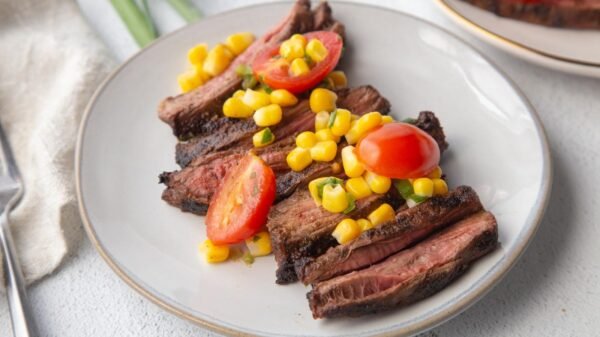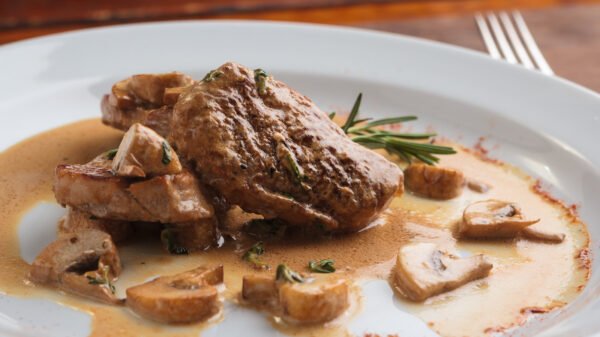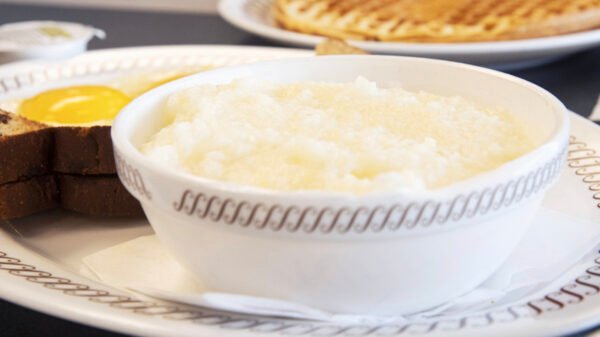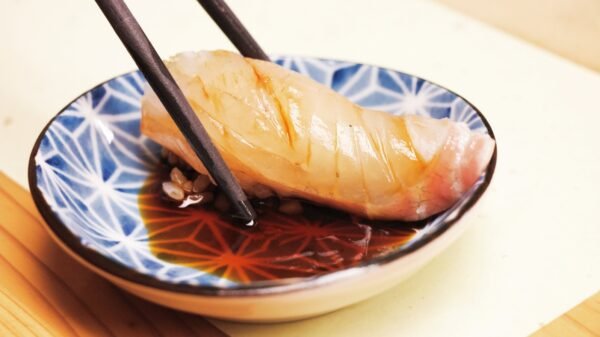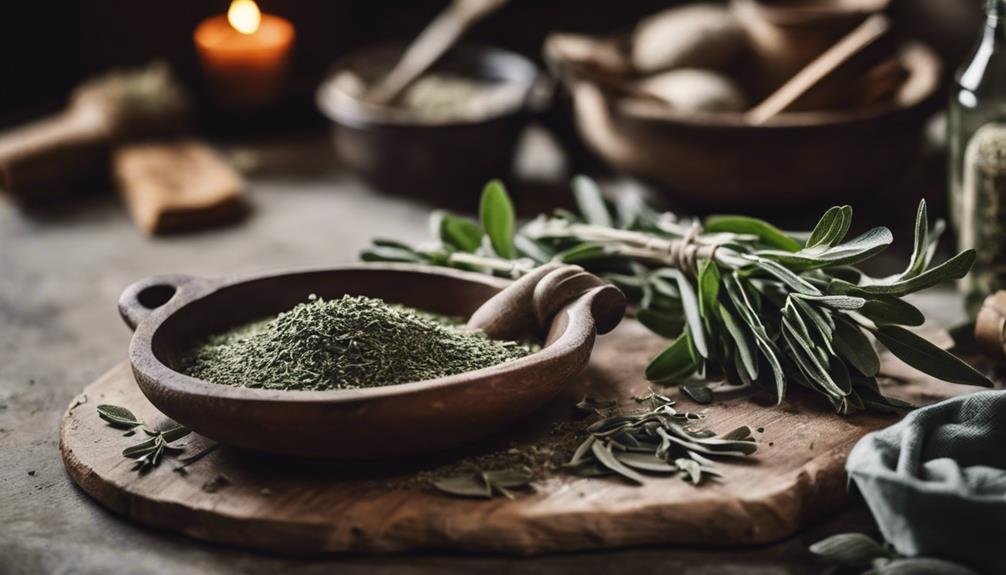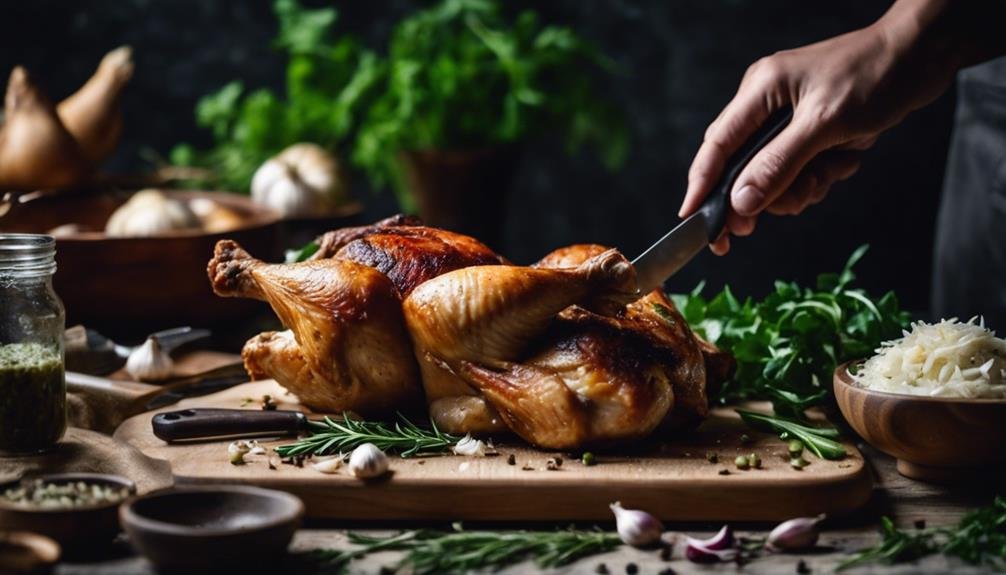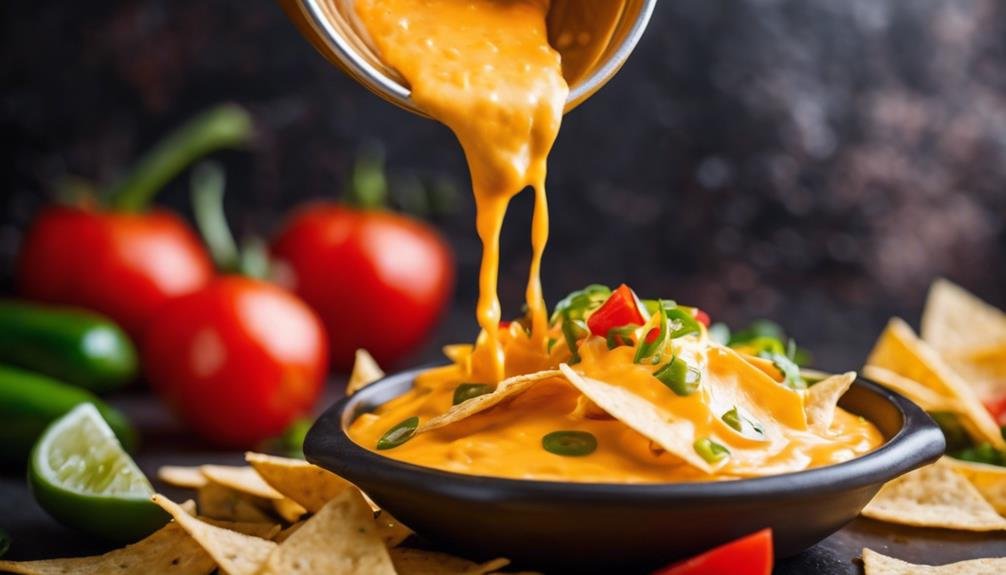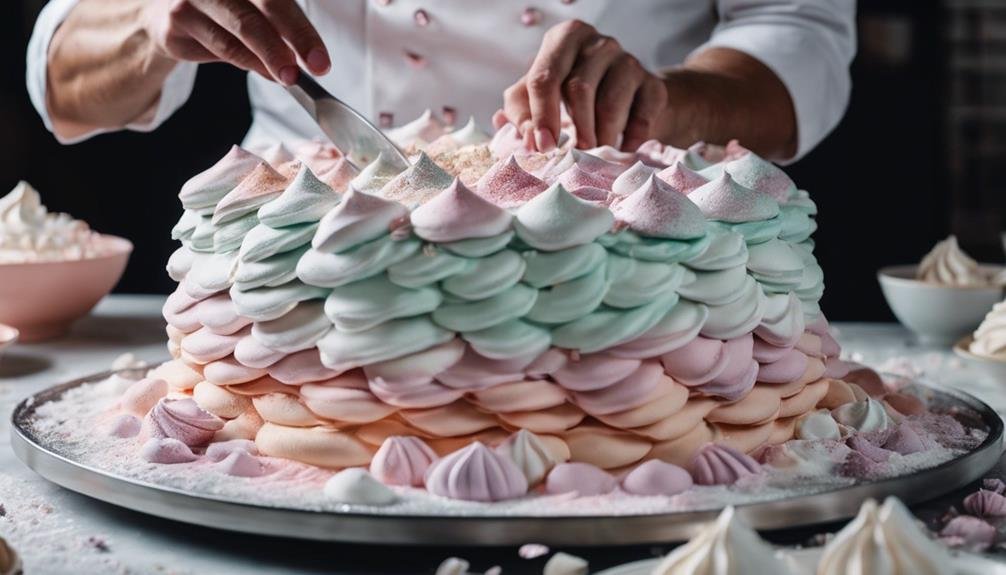You select, sniff, and chop—cooking with sage isn’t just a culinary task; it’s an art form. When wielding this versatile herb, remember it’s not just about tossing it into the pan and hoping for the best. Freshness is your first ally, ensuring that earthy aroma transforms your dish rather than overwhelms it.
But don’t stop at the sniff test; understanding its pairings is important. Sage loves to mingle with butternut squash and pork, elevating simple ingredients to gourmet status. And while playing matchmaker, why not get creative with its application? From infusing oils to mastering the perfect sage butter, there’s a whole world to explore.
So, what’s stopping you from discovering the full potential of this culinary powerhouse? Let’s set out on this flavor journey together, shall we?
Cooking With Sage Key Takeaways
- Use the right amount of fresh sage when substituting for dried to maintain flavor intensity.
- Pair sage with rosemary, garlic, lemon, and nutmeg for enhanced taste profiles.
- Fry sage leaves until crispy for a fragrant garnish that adds texture and flavor.
- Store fresh sage in a damp refrigerator towel and dry leftovers for long-term use.
Selecting Fresh Sage
When scouting for fresh sage, always aim for leaves that boast a vibrant green hue and emit a robust, inviting scent, ensuring you’re getting the crème de la crème of this culinary gem. As you begin this herbaceous adventure, remember that size matters—smaller sage leaves are your go-to for a milder flavor that won’t overpower your dishes. Think of them as the polite guest at your dinner party, enhancing the conversation rather than dominating it.
To elevate your cooking, seek this versatile herb at local farmers’ markets. Here, you’ll find sage that’s fresh and bursting with a cruciality that supermarket options often lack. However, sage’s potent flavor means a little goes a long way. Purchase it in small quantities to avoid waste and ensure every sage leaf contributes to your culinary masterpieces.
Fresh Vs. Dried Usage
After mastering the art of selecting the perfect sage, it’s time to unravel the mystery of fresh versus dried sage in your culinary creations. The choice between fresh and dried sage isn’t just about availability; it’s about unlocking the right flavor profile for your dishes. Here’s what you need to know:
- Fresh Sage: Less bitter, more vibrant, and aromatic, fresh sage is your go-to for dishes where its elegant subtlety is the star. Imagine it in a light, creamy sauce or a revitalizing salad, where its nuances elevate the experience.
- Dried Sage: This concentrated flavor powerhouse suits longer cooking ventures like stews and casseroles. It’s a quick, easy way to infuse depth and intensity into hearty dishes.
- Flavor Impact: To match the flavor impact of dried sage, you’ll need thrice the amount of fresh sage. It’s a handy tip for converting recipes based on what you have on hand.
- Versatile Herb: Whether fresh or dried, sage brings its unique profile to various recipes, making it a versatile herb in your culinary toolkit.
- Substitution Tips: Remember, the key to substitution is the 1:3 ratio of dried to fresh, ensuring your dishes are beautifully flavored, no matter the form of this versatile herb you choose to use.
Pairing With Other Flavors

When you delve into the art of flavor pairing, you’ll find that sage’s robust profile harmonizes beautifully with rosemary, thyme, garlic, lemon, and nutmeg, opening up a world of culinary possibilities.
Imagine the lush hills of Italy and the sun-kissed coasts of the Mediterranean as you blend sage and rosemary, a duo that sings in harmony in countless dishes. This pairing evokes the essence of Mediterranean cuisine and elevates it with an aromatic depth that’s hard to resist.
Now, throw thyme into the mix, and you’ve got a trio that enhances both savory and sweet recipes, making your dishes sing with aromatic notes that are both bold and nuanced. But why stop there? Add a zesty twist with lemon; suddenly, your sage-infused creations aren’t just flavorful but vibrant and stimulating.
And let’s not forget about nutmeg – the secret weapon that, combined with sage, adds a warm, nutty undertone, transforming your culinary endeavors into a feast for the senses.
Cooking Techniques
Having explored the symphony of flavors that sage can harmonize with, let’s focus on mastering the techniques that will make it truly sing in your cooking. Sage, an herb as versatile as it is aromatic, demands a bit of finesse to reveal its full potential.
- Wash and Dry: First things first, guarantee your sage sprigs are washed thoroughly and patted dry completely. Damp leaves are a no-go, as they’re prone to wilting rather than sizzling when exposed to heat.
- Pluck for Flavor: Don’t be shy—pluck those leaves off the sprig before tossing them into the pan. This ensures an even distribution of that robust sage flavor throughout your dish.
- Fry to Crisp: Briefly fry the leaves until they’re crispy, a magical transformation that enhances their texture and releases their aromatic oils, filling your kitchen with an irresistible aroma.
- Savory Sprinkle: Once fried, a sprinkle of coarse salt adds a savory kick, elevating the sage’s overall taste profile.
- Cool to Crisp: Remember, patience is a virtue. Properly cooked sage leaves will crisp up beautifully as they cool, making them a perfect, crunchy garnish for your savory delights.
Storing Sage Properly
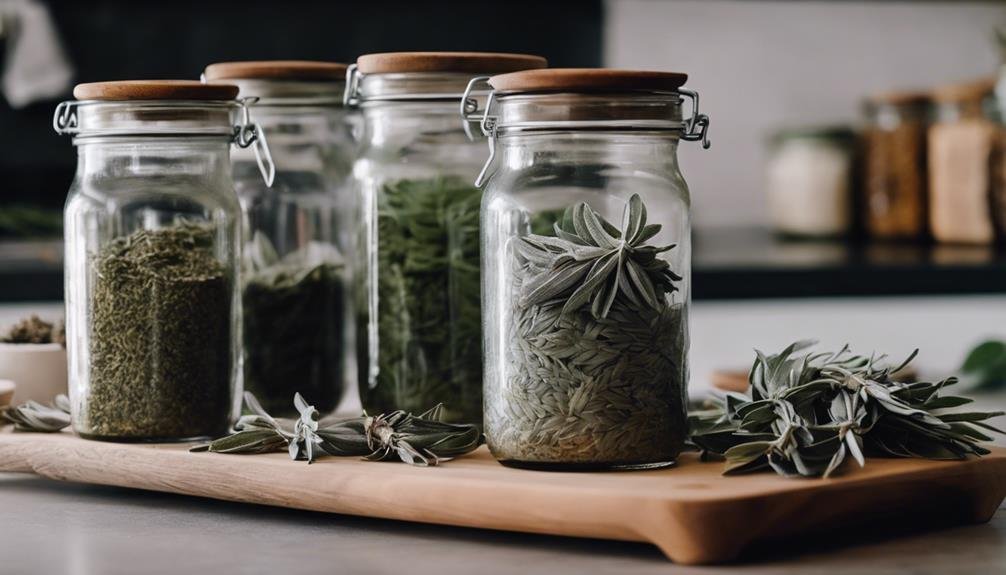
To keep your sage vibrant and full of life, wrap it in a damp towel and tuck it into the fridge, ensuring it stays fresh for the next culinary adventure. This clever trick keeps your fresh sage perky for 3-5 days, ready to add that punch of flavor we all adore.
But what if your culinary exploits are momentarily paused? Don’t fret. After day five, take any leftovers and stage a little upside-down hanging session. This drying process isn’t only a spectacle for your kitchen and the best way to preserve sage’s robust flavor.
Once dry, crumble your sage into a powdery wonder and store it in a sealed glass container, away from the tyranny of light and heat. This cool, dark residence will maintain its strong flavor for 6-12 months, ensuring your dishes never lack depth. Remember, sage packs a punch, so purchase in small quantities unless you feed an army of flavor enthusiasts.
Following these steps, you’ll master storing sage, keeping it fresh or dried, and always ready to elevate your culinary creations.
Frequently Asked Questions
What Is the Best Way to Use Sage in Cooking?
To best use sage in cooking, combine it with complementary flavors like garlic, lemon, or thyme to enhance its taste. It’s important to note that fresh sage has a milder flavor than its dried counterpart, which offers a more potent taste. Rinse and dry the sage leaves before chopping them to add to your dishes.
What Meat Does Sage Go Best With?
Sage pairs exceptionally well with pork, complementing and enhancing its flavors. It also enhances the taste of beef, chicken, turkey, and sausage.
How Do You Balance the Taste of Sage?
Balancing the taste of sage involves pairing it with complementary flavors such as sweet or acidic components like honey or citrus. It’s also crucial to use sage sparingly to prevent it from overpowering your dish. Techniques like blanching or frying can help adjust its intensity. Always taste your dish and adjust the seasoning as needed.
How Do You Use an Abundance of Sage?
To use an abundance of sage, dry it for long-term storage. You can also create sage-infused oils or vinegar, prepare sage butter, add it to pickles, or incorporate it into various seasonings to enhance your dishes. This will surely bring an interesting twist to your kitchen creations!
Conclusion
So, you’ve mastered wielding sage in your culinary adventures – kudos! Remember, picking fresh, fragrant leaves is your golden ticket.
Don’t shy away from mixing it up with dried sage when fresh is out of reach. Sage loves to mingle, especially with lavender, fruits, and those earthy root veggies.
Perfect your prep and get playful with your cooking methods. And hey, keep that sage cozy in the fridge or dry it out for the long haul.
Happy cooking, sage savant!


